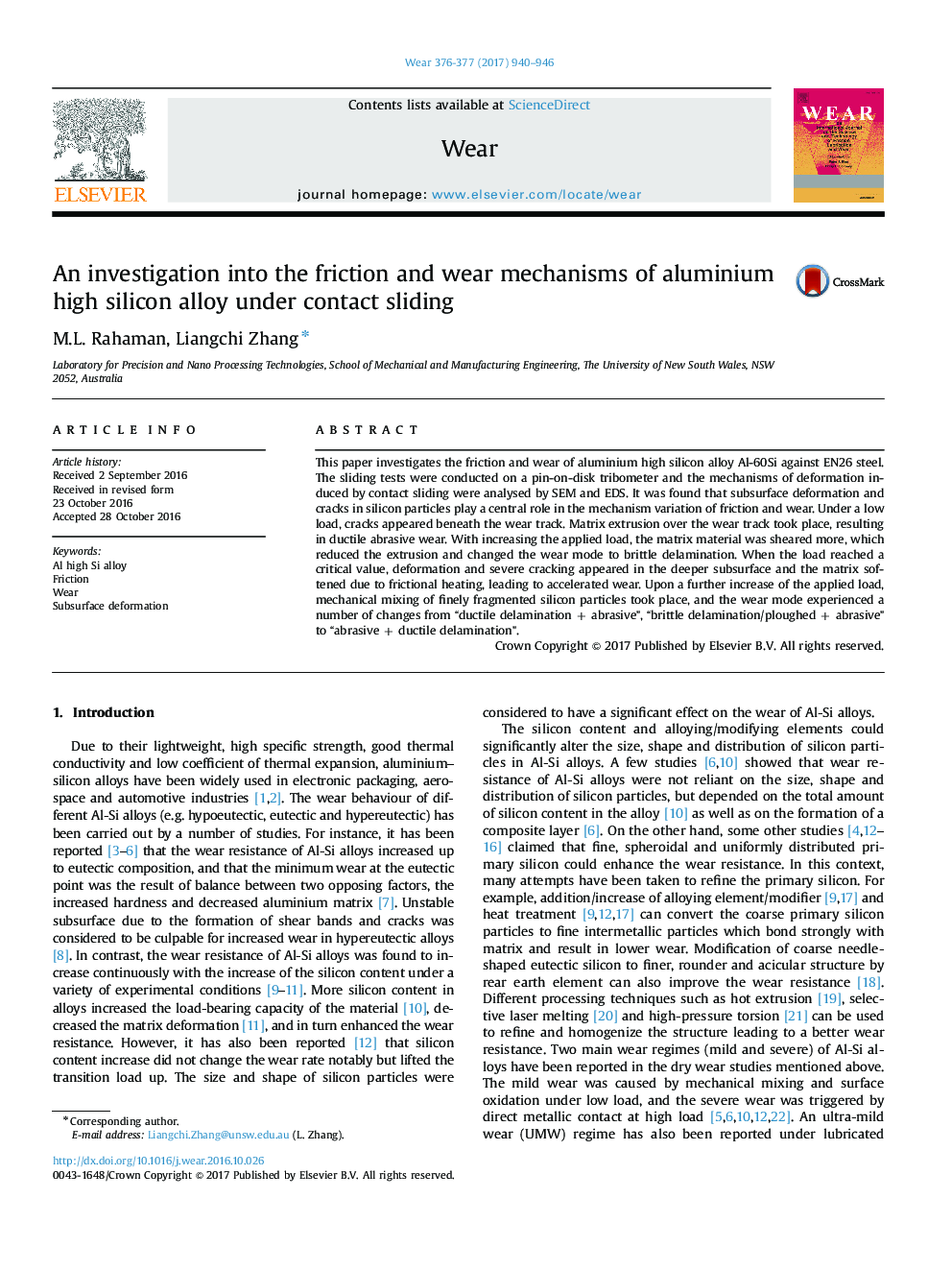| Article ID | Journal | Published Year | Pages | File Type |
|---|---|---|---|---|
| 4986536 | Wear | 2017 | 7 Pages |
Abstract
This paper investigates the friction and wear of aluminium high silicon alloy Al-60Si against EN26 steel. The sliding tests were conducted on a pin-on-disk tribometer and the mechanisms of deformation induced by contact sliding were analysed by SEM and EDS. It was found that subsurface deformation and cracks in silicon particles play a central role in the mechanism variation of friction and wear. Under a low load, cracks appeared beneath the wear track. Matrix extrusion over the wear track took place, resulting in ductile abrasive wear. With increasing the applied load, the matrix material was sheared more, which reduced the extrusion and changed the wear mode to brittle delamination. When the load reached a critical value, deformation and severe cracking appeared in the deeper subsurface and the matrix softened due to frictional heating, leading to accelerated wear. Upon a further increase of the applied load, mechanical mixing of finely fragmented silicon particles took place, and the wear mode experienced a number of changes from “ductile delamination + abrasive”, “brittle delamination/ploughed + abrasive” to “abrasive + ductile delamination”.
Keywords
Related Topics
Physical Sciences and Engineering
Chemical Engineering
Colloid and Surface Chemistry
Authors
M.L. Rahaman, Liangchi Zhang,
